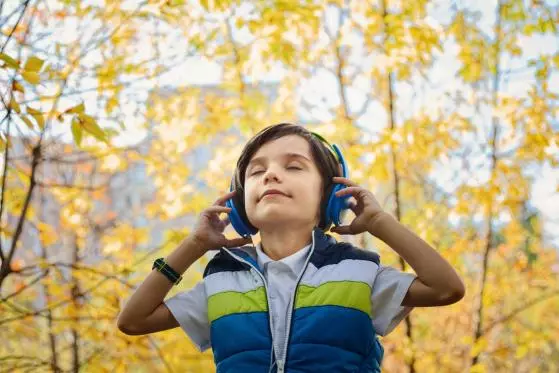Task 1
Imagine that you are preparing a project with your friend. You have found some interesting material for the presentation and you want to read this text to your friend. You have 1.5 minutes to read the text silently, then be ready to read it out aloud. You will not have more than 1.5 minutes to read it.
As the internet and digital technology become a bigger part of our lives, more of our data becomes publicly accessible, leading to questions about privacy. Every search you make, service you use, message you send and item you buy is part of your ‘digital footprint’.
In the past, it was easy for people to keep track of their personal information. Like their possessions, people’s information existed mostly in physical form: on paper, kept in a folder, locked in a cupboard or an office.
Today, our personal information can be collected and stored online, and it’s accessible to more people than ever before. Many of us share our physical location, our travel plans, our political opinions, our shopping interests and our family photos online – as key services like ordering a takeaway meal, booking a plane, taking part in a poll or buying new clothes now take place online and require us to give out our data.
Task 2
Study the advertisement.

You are considering buying the Razer Viper Ultimate (a gaming mouse) and now you’d like to get more information. In 1.5 minutes you are to ask four direct questions to find out about the following:
- number of programmable buttons
- colours available
- weight
- price
You have 20 seconds to ask each question.
Suggested answers
1. How many programmable buttons does the gaming mouse have?
2. What colours are available for the gaming mouse?
3. What is the weight of the gaming mouse?
4. What is the price of the gaming mouse?
Task 3
You are going to give an interview. You have to answer five questions. Give full answers to the questions (2–3 sentences). Remember that you have 40 seconds to answer each question.
Audio Task 3
Tapescript for Task 3
Suggested answers
Interviewer: Hello everybody! It’s Teenagers Round the World Channel. Our guest today is a teenager from Russia and we are going to talk about robots. We’d like to know our guest’s point of view on this issue. Please answer five questions. So, let’s get started.
Interviewer: Did you prefer traditional or robotic toys for playtime as a child? Why?
Student: As a child, I preferred robotic toys as I found them more entertaining. I remember having a lot of fun with a toy robot that could move and make noises.
Interviewer: What is your opinion on robots?
Student: I think robots are cool and can help us with hard or dangerous tasks. They can be a useful tool, but they shouldn’t replace human interaction and relationships.
Interviewer: Do you believe that robots will take over jobs that are currently done by humans? Why or why not?
Student: I believe robots will take over some jobs because they are faster and don’t need breaks like humans do. They can also do repetitive and dangerous tasks that are too hard or risky for people.
Interviewer: Do you think it is a good idea to make robots look like people? Why or why not?
Student: I’m not sure, but I think it could be confusing for some people if robots looked too much like humans. Maybe it’s better for robots to have their own unique appearance.
Interviewer: What are your thoughts on the potential of robots to improve our lives in terms of safety, health, and convenience?
Student: I think robots will definitely make our lives easier, safer and healthier in the future by taking over dangerous or repetitive tasks. Self-driving cars and delivery drones can help us save time and reduce road accidents, while AI virtual assistants can make our daily tasks simpler and more convenient.
Interviewer: Thank you very much for your interview.
Task 4
Imagine that you and your friend are doing a school project “Life without stress”. You have found some photos to illustrate it but for technical reasons you cannot send them now. Leave a voice message to your friend explaining your choice of the photos and sharing some ideas about the project. In 2.5 minutes be ready to:
- explain the choice of the illustrations for the project by briefly describing them and noting the differences;
- mention the advantages (1–2) of the two ways to relieve stress;
- mention the disadvantages (1–2) of the two ways to relieve stress;
- express your opinion on the subject of the project – which of the ways to relieve stress presented in the pictures you’d prefer and why.
You will speak for not more than 3 minutes (12–15 sentences). You have to talk continuously.


Suggested answer
Hi Alex! I’ve found two photos to illustrate our school project on life without stress. I’ll explain my choice and share some ideas in this voice message, OK?
The first one shows a young girl in a gym, working out on a simulator, and it seems like she’s not only keeping fit, but also relieving stress. The second photo depicts a boy in an autumn park, wearing headphones, and he seems to be really enjoying the music. The photos clearly show two different stress busters: through a work-out in a gym and through the power of music.
I think it’d be a good idea if we discussed some advantages and disadvantages of these two ways to fight stress in our project. For example, relieving stress through a work-out provides physical health benefits, but exercising can be physically taxing and requires motivation, time and effort to achieve the desired results.
On the other hand, listening to music is an affordable way to reduce stress, but it may not work for everyone and may only provide temporary relief.
Personally, I’d prefer to exercise to relieve stress because it would benefit me both physically and mentally. I find exercise to be an effective and healthy way to manage stress.
Well, that’s all for now. It’s interesting to hear your thoughts too. Bye!
But the girl on the first photo is listening to music too…
It seems to me that the main difference between pictures is concentrated in active and passive ways of coping with stress..
When people are working out in a sports gym while using earplugs, they can utilise different audio content beyond music. Here are a few possibilities:
— They can listen to educational or motivational podcasts, audiobooks, or informative content related to fitness, health, or personal development.
— They can follow audio-guided cardio workouts.
— They can use language learning apps or audio lessons to practise a new language while working out. (This can be a productive way to use their time and enhance their language skills.)
So can the boy 🙂